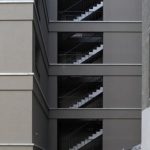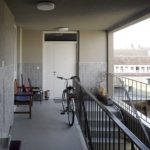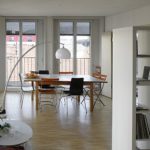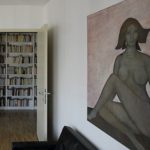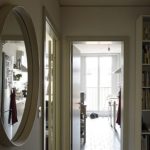Intro: Captive autonomy
Text: Cosmin O. Gălățianu
The city, but mostly the European city, keeps its body under surveillance. It fears to have its healthy components excised, it feels the ghosts of the amputated ones, and it treats its dysfunction with cautious motions – very much like someone with a heart disease takes care of their body.
Under this ethical and eminently substantiated sequester, the fact of being autonomous in the city seems, above all, an illusion rather than an aspiration. In a referential excess or an overflow of urban conjuncture, autonomy has a rather captive vocation instead of a liberating one.
However, the practice of Sergison Bates is forked, both independent and subordinate, by reflecting on the existing context and, at the same time, by anticipating its development. Placing your architecture between autonomy and mediation does not necessarily mean to accept two distinct types of approach, nor a contradictory attitude to one’s own apparatus.
More precisely, the body relates to a given circumstance, as a reverence to the vicinity, which imperatively comes from the city’s desire to be dealt with, and relates to the interior of the body, overturned and recomposed under new hierarchies and exigencies (the face behind the face / the city behind the city).
This engagement of the latent behind the face transcends modernity through the discontinuities between the components, between the revealed expression and the hidden content, or between the notorious image and the fine discordance.
For example, in the dwellings on Rue du Cendrier, Geneva, the body is said to be semi-autonomous.
 *Ground floor plan
*Ground floor plan
The “folded” facades are mediatory, within the city’s scale and part of the content, but the plans are disengaged and based on their own orthogonal system. Repressing the instinct to articulate them or anticipating their tangency exposes the tension between autonomy and mediation.
 *plans of housing levels, mezzanine plan (right side)
*plans of housing levels, mezzanine plan (right side)
On the other hand, in the case of another project – the Wingen Care Home, in Belgium – the reason for working between the two is the outcome of functional requirements and local regulations: the ensemble relates to the sub-urban environment; it therefore has to conceal the scale, and, while the footprint overcomes those in the neighborhood, the intimacy of the place is recovered in the inner or half-open courtyards.
Sergison Bates, therefore, appears to be a slit-office whose modernity lies precisely in working within the border, which is felt both as a necessity but especially as a privilege.
A crèche and 18 social housing apartments
Text: Sergison Bates architects
Foto: David Grandorge
The project for a crèche for 80 children and 18 social housing apartments was commissioned by the Fondation de la Ville de Genève pour le Logement Social and won in competition in 2006.
The building mediates between the consistent urban texture of Rue Rousseau and adjacent constructions by absorbing the podium, arcade and facetted tower forms of Saugey’s Mont Blanc Centre and continuing the street edge and tri-partite ordering of the Ecole Ménagère.
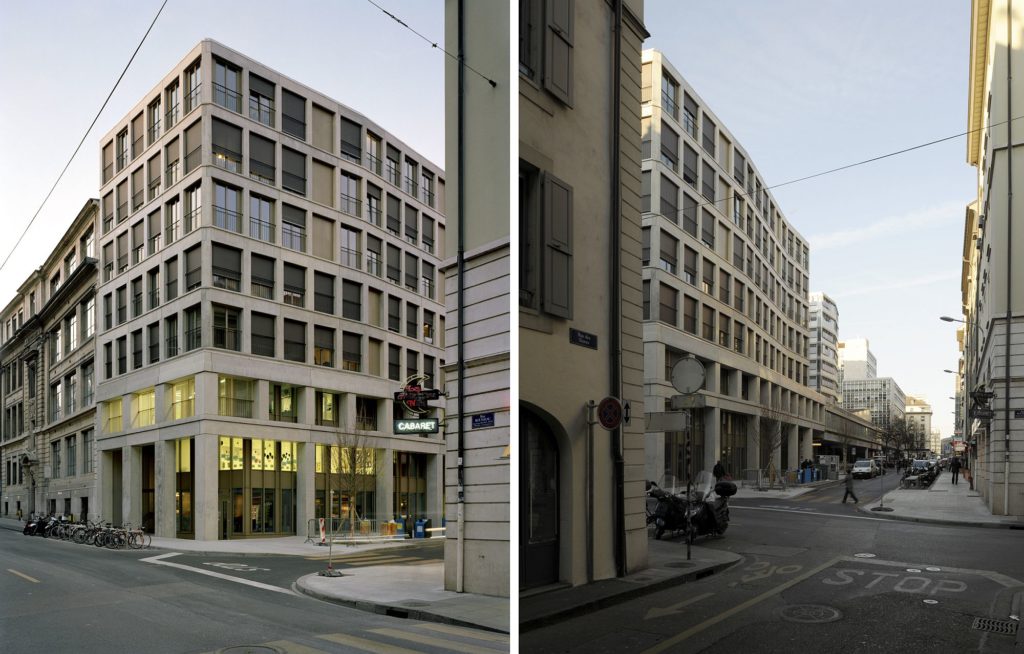
The precast concrete elements resemble a worn creamy grey stone and are stacked in large T and M shapes to create a monolithic surface: the sense of permanence and solidity evokes ideas of enclosure and protection and ultimately a feeling of “home”.

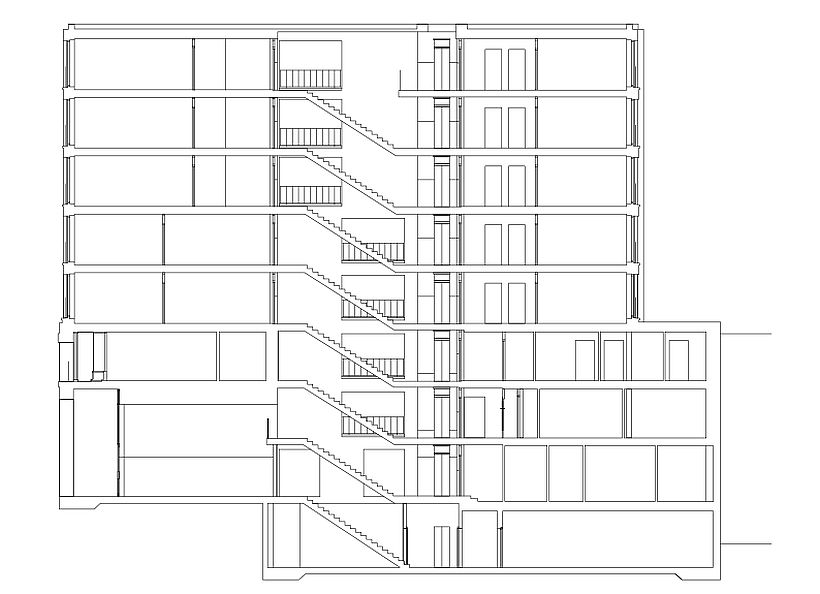
Apartments are organised around the perimeter on all four sides, with central halls connecting the principal rooms in a continuous spatial sequence.
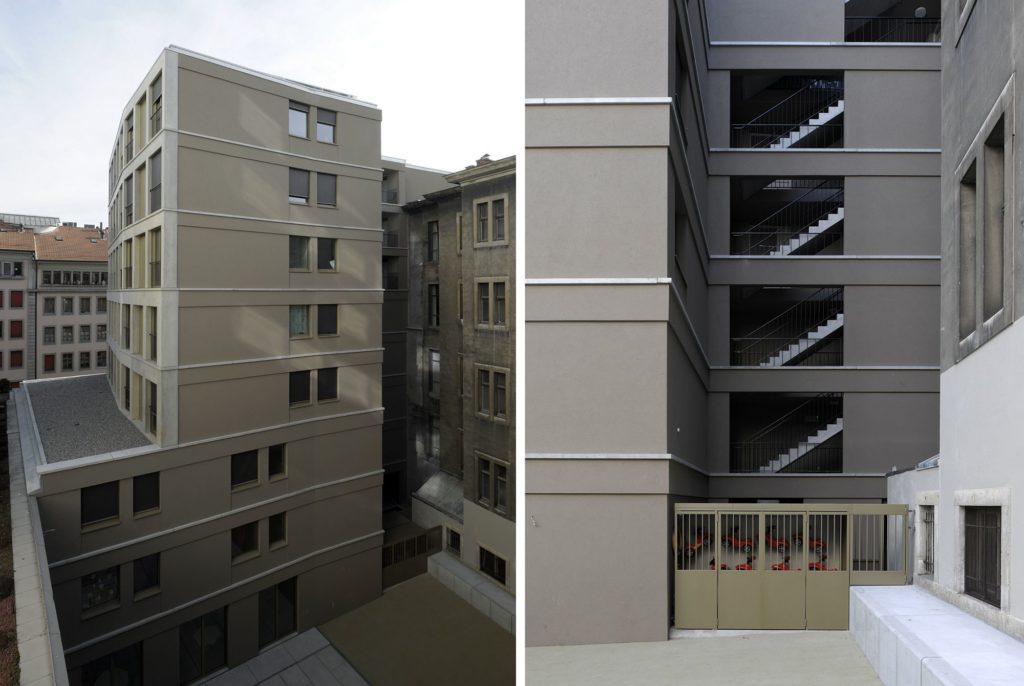

Internally, the rhythm of the reveals between full-height windows defines rooms. Mediating between public and private space, canvas blinds provide shading, inward opening windows ventilation and full height curtains privacy.


As in the small courtyards prevalent in the St. Gervais district, with their atmosphere of intimacy and neighbourliness, access is via an alleyway leading to an open court, with a gallery providing a semi-private threshold between apartments.
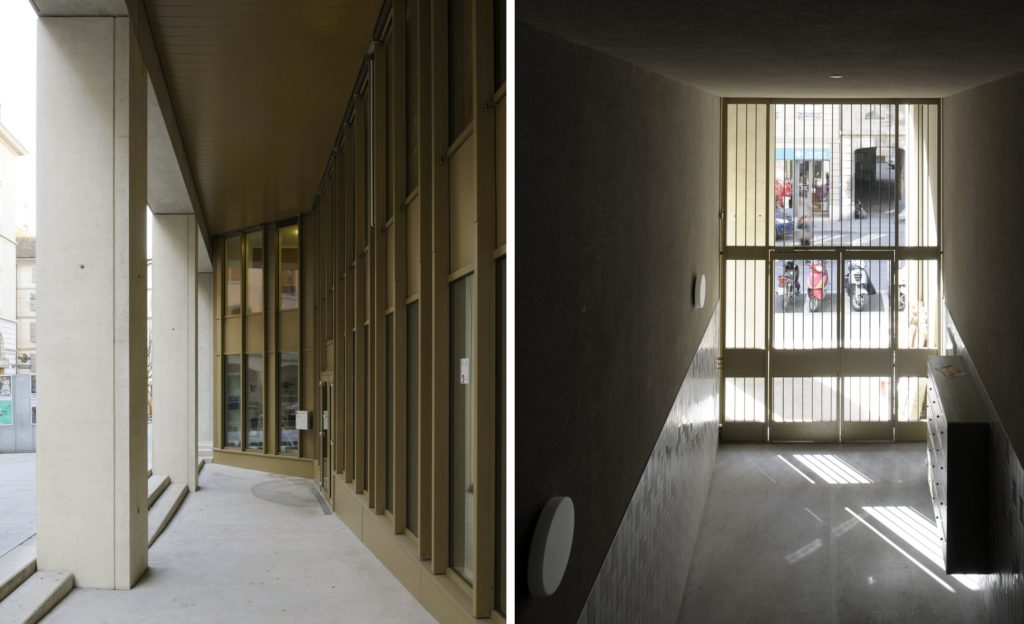
The building is inserted into the existing urban fabric of arcades, alleys and yards, with a variety of openings and routes that permeate the dense city block and a new arcade extending the existing covered pavement down the length of Rue de Cendrier. The activities of the crèche are visible to passers-by at ground level, and at the second floor level a full-length, open-sided veranda links the playrooms together. Audible from the street below when opened, the veranda makes a highly visible addition to the atmosphere of city life.
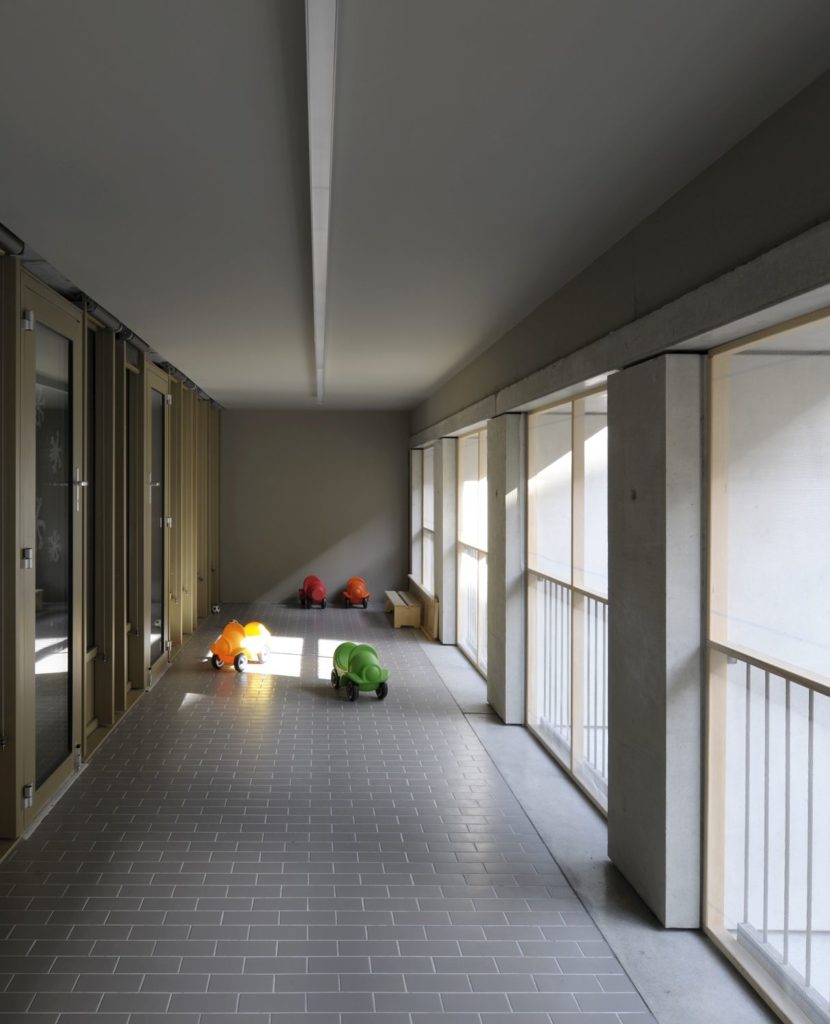
All areas of the building are accessible to wheelchair users, with level access throughout and lifts between floors. The crèche is specifically designed for small children, with no sharp corners, unimpaired circulation routes and a soft rubber chips surface in the courtyard to prevent injuries.
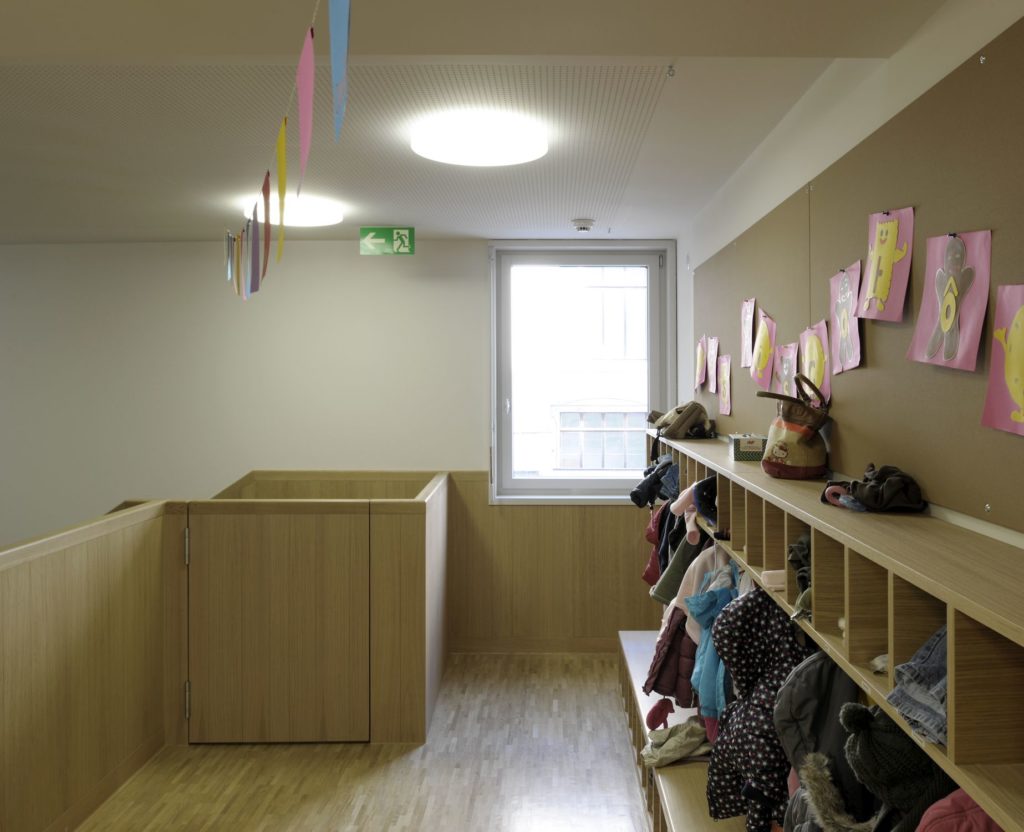
Non-toxic, locally sourced recycled aggregate materials are used for the in-situ concrete slabs, walls, and load bearing elements. The high performance thermal envelope of the building is designed to comply with MINERGIE requirements. A solar powered heat exchange pump feeds into an under floor heating system and hot water is supplied by solar panels at roof level. All rooms are fitted with a low velocity ventilation system, with grilles adjacent to the windows to control heat loss in the cold months.
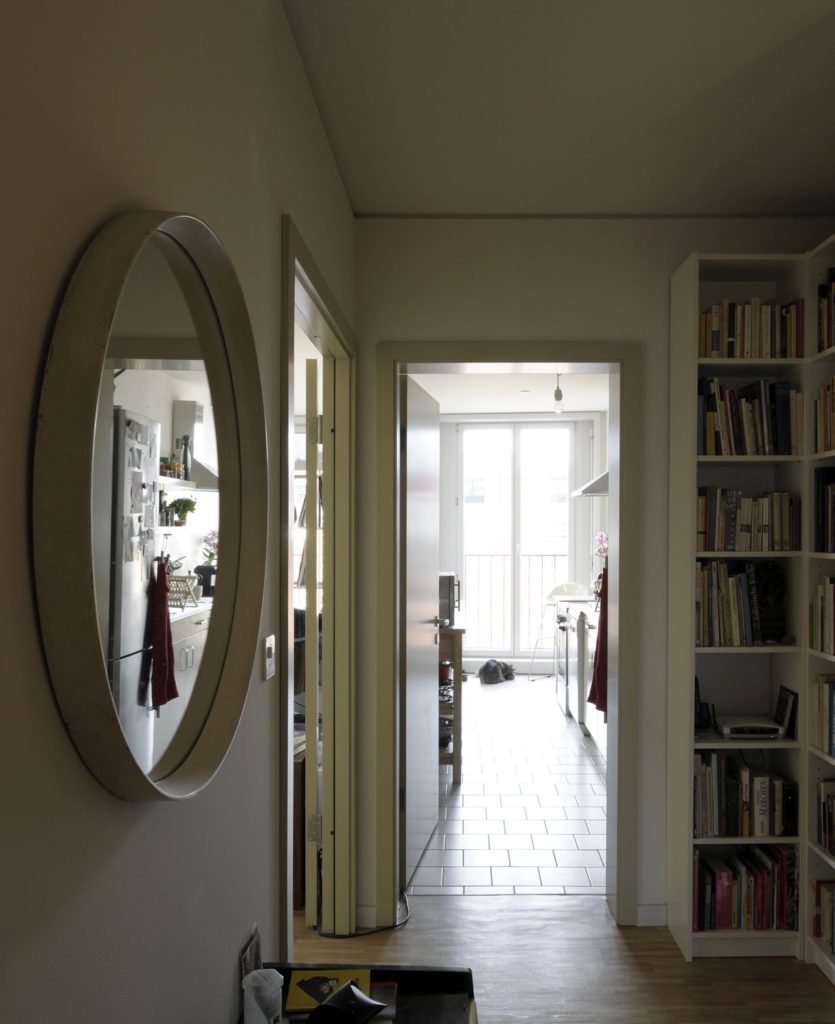
Info & credits
Architecture: Sergison Bates architects, in collaboration with: Jean-Paul Jaccaud Architectes, Geneva
Project duration: 2006-2011
Contract value: CHF 12,7 million
Gross internal area: 3188 m2
Client: Fondation Ville de Genève pour le Logement Social
Structural engineers: Sancha SA

